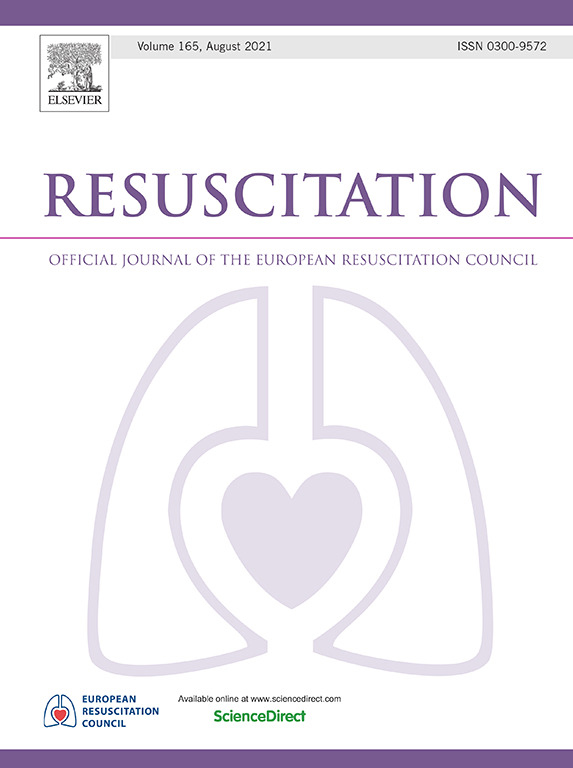血液计量学预测循环性死亡供者后不受控制的捐赠获得的肾脏的生存能力
IF 4.6
1区 医学
Q1 CRITICAL CARE MEDICINE
引用次数: 0
摘要
尽管循环死亡后不受控制的捐献(uDCD)供体提供了极好的长期存活率,但很大比例的移植物最终被发现无法移植。心肺复苏术(CPR)时的血糖测定是组织代谢和器官灌注的标志。我们分析了潜在uDCD供体的血量测定值是否有助于区分有效(提供至少一个移植肾)和无效的uDCD供体(不提供适合移植的移植物)。本文章由计算机程序翻译,如有差异,请以英文原文为准。
Capnometry predicts the viability of procured kidneys from uncontrolled donation after circulatory death donors
Introduction
Although uncontrolled donation after circulatory death (uDCD) donors provide kidney transplants with excellent long-term survival rates, a significant percentage of grafts are eventually found not to be viable for transplantation. Capnometry during cardiopulmonary resuscitation (CPR) is a marker of tissue metabolism and organ perfusion. We analyzed whether capnometry values in potential uDCD donors could help to differentiate between valid (who provided at least one transplantable kidney) and futile uDCD donors (those not yielding suitable grafts for transplantation).
Material and methods
This study was performed at two transplant centers between January 2018 and December 2023. Patients who had unsuccessful out-of-hospital CPR attempt after cardiopulmonary arrest (CPA) and met the criteria for uDCD were selected. Capnometry values were analyzed at the start of CPR, at the midpoint and at arrival at the hospital (transfer), along with other prehospital variables that could influence the selection of a viable donor.
Results
Overall, 69 potential uDCD donors were included, of which 26 (37.7 %) were valid and 43 (62.3 %) were futile. The capnometry values in valid donors compared to futile donors were 24.5 mmHg versus 16 mmHg at the initial reading (P-value <0.078) and 26 mmHg versus 15 mmHg at transfer, respectively (P-value <0.004). The optimal cut-off value for transfer capnometry levels to discriminate viable from futile donors was 17 mmHg. In the multivariable model, mechanical chest compression (odds ratio [OR]: 14.29; P-value = 0.009), transient return of pulse (OR: 19.0; P-value = 0.013), donor age (OR [per one-year increase]: 0.91; P-value = 0.026) and capnometry values at arrival at hospital (OR [per one-mmHg increase]: 1.08, P-value = 0.012) were independent predictors of donor viability.
Conclusions
Capnometry obtained at hospital arrival is useful for identifying valid uDCD donors. In addition, younger donor age, use of mechanical chest compression devices, and transient return of pulse are prehospital variables that also increase the odds of viability in this type of donors.
求助全文
通过发布文献求助,成功后即可免费获取论文全文。
去求助
来源期刊

Resuscitation
医学-急救医学
CiteScore
12.00
自引率
18.50%
发文量
556
审稿时长
21 days
期刊介绍:
Resuscitation is a monthly international and interdisciplinary medical journal. The papers published deal with the aetiology, pathophysiology and prevention of cardiac arrest, resuscitation training, clinical resuscitation, and experimental resuscitation research, although papers relating to animal studies will be published only if they are of exceptional interest and related directly to clinical cardiopulmonary resuscitation. Papers relating to trauma are published occasionally but the majority of these concern traumatic cardiac arrest.
 求助内容:
求助内容: 应助结果提醒方式:
应助结果提醒方式:


